Abstract:
Mexico is going through a period of political and social crisis. However, the atmosphere of repression, censorship and violence begins with the education of young people, with a culture of body denial, silence, and a lack of self-consciousness.
An education based on arts and especially theater, can help our society to overcome this lack of self- knowledge and gain freedom of speech and freedom of expression.
The following paper is built on the idea that an education based on authentic expression, self-knowledge, physical and emotional freedom is a way of learning and teaching a critical thought that will lead young people to take conscious decisions. I consider that, in Mexico, a general lack of freedom of expression, as well as the government’s repression and censorship, are caused by an education still based on body denial and an outdated value system.
MAN: It is hard to say “no”.
ANA: But…I’ve lost as much by always saying “yes”… MAN: Was your aunt spiritual, idealistic, Catholic? ANA: Yes.
MAN: Then she made you lose your body and a part of your soul. There are those who lose the opposite: they have stomach, gym, sports. We humans are considered physical beings, matter, etcetera, but no sexual, of course, or emotional. Other parents, such as mine, knew that being a man or a woman is a matter of sexuality as it gives you appetites, duality, intricate thought, inspiration, spirit… ¡But my stomach! So is everyone else: They are surgeons, butchers, always amputating limbs, mental planes, gestures…
ANA: Everyone else? Who are they?
MAN: Aunts, governments, bosses, theories. Some of them do it because they’re a bunch of idiots, some for interest
ANA: Interest?
MAN: It’s easier to control half humans. Stage direction: (The lions wake up roaring.)
(Carballido, The Day They Let the Lions Loose, 265-266.)
The Day They Let the Lions Loose is a play wrote by Emilio Carballido in 1959. It is the story of Ana, a fifty year old woman who never dared to disobey anyone nor to question anything, until one day, while strolling through the Chapultepec Park, she gets trapped among a pride of zoo lions that escaped from their cages. This experience, as well as her conversations with Man, will lead her to make her own decisions and to speak up against her aunt for the first time in her life.
Dedicated to Rosario Castellanos, a Mexican feminist writer of the fifties, this play advocates for those women and men who dared going beyond themselves and social parameters, for those who consider the world as a place of struggle and forge their own paths.
The lions represent the possibility of self-consciousness and individual freedom: “The day will come”, Ana says while the police is chasing her as a lion’s accomplice, “in which everyone of you will be in cages, while we lions will be loosened, roaring all over the streets” (íbid., 270.).
When I asked my high school drama students, what did the lion’s freedom stood for, I found that some of them were not only incapable of understanding the play, but those who were, would not dare to say it out loud. “What does the lion’s freedom signify, what do they symbolize?” I kept asking, “Who are the lions?” I insisted, until one of my students ventured an answer, “Us?” she asked, “I mean, we’re supposed to be the lions, we’re supposed to be able to loosen ourselves and our wishes so we can be happy”.
My students don’t know it yet, but I hope that someday they’ll discover how to loosen and set free those lions that roar caged in their eyes and bodies every time they don’t dare, out of fear to be mistaken or to disobey, to express what they really think and feel.
Now I ask myself if my students’ fear to express themselves and their incapability to read and interpret symbols is a reflection of a social dynamic, a social fear, of a society that has been taught over the years to keep silent and, in consequence, forced to forget, to stop fighting, to obey.
The bodies of our children, youth and adults grow and develop subjected by an educational, political and moral system that teaches censorship and obedience, silence and inhibition, which reduces us to shame, humiliation and above all, to doubt and ignorance.
In his essay “The origins of Mexican morality”, Vidales Delgado comments that:
Historically we have no responsibility for the actions of those who lived before us and for the values that guided them, we have no responsibility for the present structures, nor for the belief and value systems we inherited, but we are responsible to accept them or reject them critically, just as we have responsibility for our actions and their consequences. Education can contribute to settle or transform those beliefs and values as our ethicality is built with
elements of the past and the present moment. (Vidales Delgado, “The origins of Mexican morality”.).
I consider that our responsibility as artists is to identify and analyze social problems so we can discuss them in our artistic work and propose new alternatives. My commitment with art and theater is a commitment with education, and that is why I am interested in integrating drama in pedagogical processes. Mexican society claims a comprehensive education which integrates empirical learning processes, a self-awareness and self- consciousness acquisition, an oral education, and social skills.
My interest in using drama in basic education comes from which I consider one of the biggest deficiencies of Mexican education: Our academic programs do not include, or reduce to a minimum, oral activities, conversation dynamics, social and emotional learning. Most kids spend from four to eight hours sitting down, still and silent, just listening and copying down what the teacher says. Although our educational system is supposed to be secular, it is morally based on a body denial in both a physical and a symbolic dimension. It is also an authoritarian system which censorships critical thinking and ignores students’ emotional states. Traditionally, in Mexico values, social and oral skills where taught by family and religion, but since both social institutions have been disjointed, the development of these skills are taken for granted and only a few are aware of the problem, while this deficiency increasingly translates into “harmful” social and personal behaviors.
With the lack of verbal skills comes a lack of physical and intellectual skills not only to perform nonverbal language and gesturing, but also to read and interpret it. Most children do not know what they are feeling, how to name their feelings or how to act them out. Feeling, speaking or moving freely equals to being a bad kid, while not feeling, not speaking, and not moving equals to being a good kid. So our children learn obedience while they develop a lack of self-confidence and self-consciousness, the inhibition to speak, to say “no” or to express themselves through their bodies.
As we all know, voice is a physical expression. Our intention in speech comes from physical, emotional and intellectual movements, not only from our rational capacities. Sometimes it seems that only artists are allowed to express themselves by using their bodies and their emotions as a whole, but let´s face it, those artists or anyone in mexican society who take the risk of expressing their doubts, those who take the risk of questioning, those who become real performers as they act out with their bodies and their voices that which should not be said or done, are not welcome, they either stay marginal or they disappear. And the ones who surround them, inspired by fear, decide to stay quiet, to stay still, to speak only when they are asked to, and to say only what is allowed to. So, as Carballido says, were are still being educated and we live as “half humans”, as it is easier to control us. In Mexico, fear, just like voice or silence, is also a physical matter. Our streets, our public transport, our malls, our parks, our schools, our theaters, our museums, our
homes…Public spaces as well as private spaces are becoming more violent for one reason or another, and yet we do not take action against it because we would not dare to, because of fear, because we will not dare to say “no”.
By several techniques that involve releasing vocal, physical and emotional tensions produced both by personal life experiences and social constructs, I find in drama a possibility to achieve a full self-expression, a critical thinking and a conscious decision making.
Drama is considered to promote communication skills, teamwork, dialogue, negotiation, socialization, etcetera; it stimulates the imagination and creativity; it develops a better understanding of human behavior and empathy with situations that might seem distant.
Creative dramatics encourages students to use their bodies and language to name the world and to create worlds all together, in relation to one another and to the reality in which they live. Also, through the re-creation of the word, its situations and characters, students are able to observe themselves and each other, to question their own behaviors and to re- elaborate their thinking, their beliefs, feelings, and language by the spontaneous and creative elaboration of symbols and metaphors. Either by spontaneous playing or by acting out specific situations they can reproduce, release and observe their own emotions. Through drama, theater allows us to objectify our behavior; by letting us observe ourselves, it tests us, it questions us, and allows us to see in perspective our thoughts, feelings and actions. It allows the development of a critical thinking and allows us to make better and more conscious decisions; it encourages us to use our bodies and our voices, it encourages and inspires us to say “no”, to stand for, to speak up.
The real challenge in a country like Mexico is to put these into practice, is finding the way of bringing drama into education as a primary need, and not only as a secondary treatment in cases of diagnosed problematic social behaviors. Maybe only then, we could as well put into practice the so called ‘dialogue’ that Mexican politicians constantly suggest in order to solving our problems.
Berta María Soní Solchaga




